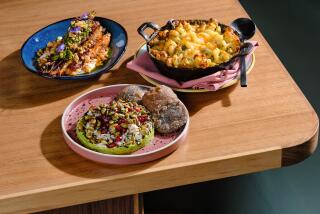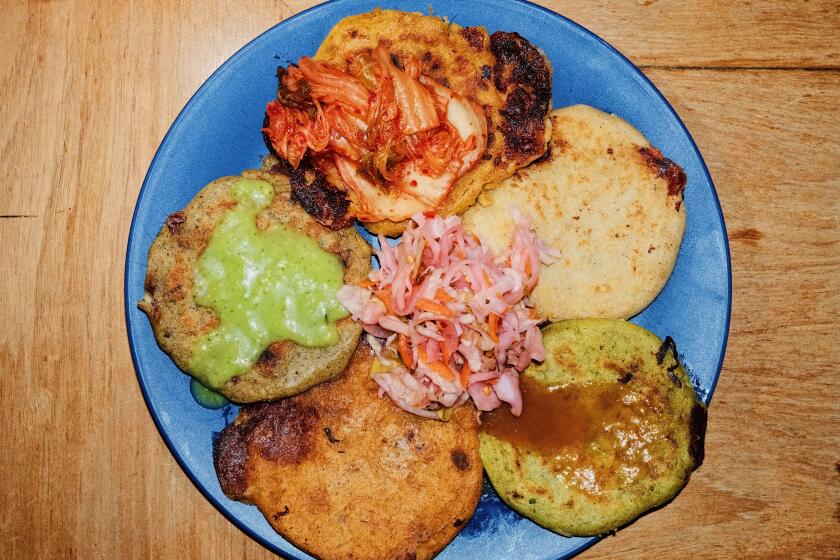The Melon-Mussel-Duck Meal
What’s the most delicious, truly easy meal I’ve made recently? One that’s adaptable to the seasons and also a marvelous foil for wine?
It started with prosciutto and melon. The prosciutto was San Daniele from the Veneto, a cured ham that’s sweeter (actually, less salty) than the famous prosciutto di Parma, which of course you can also use.
I usually buy prosciutto at an Italian deli or grocery where they know how to slice it properly--too thin and it falls apart; too thick and it not only is a struggle to eat, it doesn’t taste the same.
The taste of the chilled melon against the fine salt tang of the ham and a Billecart-Salmon non-vintage Brut rose is irresistible. The color is lovely--the pink of an heirloom rose. It has much more finesse than you’d ever expect in a rose Champagne in this price range. (In another season, I might wrap the prosciutto around plain grissini or bread sticks.)
For a first course, I served steamed mussels, heaped in a huge bowl with plenty of crusty bread to soak up the aromatic juices. You don’t really need a recipe--the mussels are basically steamed in the shell with white wine and shallots, but French chef Joel Robuchon’s version, with lots of black peppercorns ground over, takes the basic dish up a notch.
Here in the L.A. area, it’s not hard to find farm-raised Santa Barbara mussels, which I much prefer to the larger green-lipped New Zealand variety. I think the taste is sweeter, and I like the smaller mussels for their texture. The big ones look less appetizing and sometimes take two bites.
I was a little worried about the wine, though. I’d planned to serve the 1996 Chardonnay “Mon Plaisir” from Peter Michael, a toasty, barrel-fermented Chardonnay that’s not shy on oak. I hoped at best it would be a compromise with the first course (I simply felt like drinking that wine and eating mussels on the same Sunday night) and never expected they would, in fact, be such an extraordinary combination. It was entirely serendipitous.
The normal match for that kind of oaky Chardonnay would be a rich, cream-based sauce or white wine reduction, which, to me, is like sinking into a too-soft feather bed. This recipe has more, well, muscle and allows the Chardonnay to show off more than just its richness. In fact, that hit of black pepper somehow tones down the perception of oakiness and fat in the wine without blocking out any of this beautiful Chardonnay’s many fine nuances.
The main course was designed to exploit a tried and true food and wine combination, Barbaresco with duck. I had had a bottle of Angelo Gaja’s 1989 “Sori San Lorenzo” languishing at the back of my wine closet for a while and thought it might be about ready to start drinking.
So the night before, I marinated Muscovy duck breasts in a paste of garlic and herbs from a Paula Wolfert recipe and slipped them into zip-lock plastic bags and refrigerated them. An hour or so before grilling over mesquite, I took them from the refrigerator to bring them up to room temperature. (If you can’t find Muscovy duck breasts at your local market or butcher, try Trader Joe’s, which stocks frozen Muscovy duck breasts from time to time; one double breast is enough to serve two people.)
Grilled rare and sliced on the diagonal, the duck was smoky from the grill, suffused with the taste of thyme, garlic, shallots and parsley. Don’t let those juices get away; you’ll want to serve them spooned over the meat. Any leftover morsels you can use in a salad the next day.
With a wine as great as this 1989 Barbaresco cru, you don’t need--and probably don’t want--a rich, complex sauce, just a meat that’s flavorful enough to play off the wine’s fascinating flavors of spice, tobacco and intense, ripe fruit as they evolve in the glass.
The 1989 San Lorenzo is one of the world’s great wines and certainly one of the best Barbarescos Angelo Gaja ever made. For me, it’s an ideal match, one in which each element is enhanced by the other. (A full-bodied young Syrah, such as the 1996 Alban Vineyards “Reva,” this week’s Wine of the Week, is another good match with the duck.)
Menu
Prosciutto and Melon served with Billecart-Salmon non-vintage Brut Rose
Steamed Mussels with Pepper and Parsley served with 1996 Peter Michaels Chardonnay “Mon Plaisir”
Grilled Duck Breast served with 1989 Gaja Barbaresco “San Lorenzo”
GRILLED DUCK BREASTS
(Magret de Canard Grille dans sa Peau)
I prefer to use Muscovy duck breasts in this recipe adapted from Paula Wolfert’s classic “The Cooking of Southwest France” (The Dial Press, 1983). Wolfert broils her duck breasts, but I prefer to barbecue them over mesquite. If you want to broil them, reverse the directions, placing the breasts skin-side down for the first minute. Then turn skin-side up to finish. She also wipes the marinade from the breasts before cooking. I prefer to leave it on. Slicing the duck breast like flank steak makes it much more tender.
2 whole duck breasts, halved, boned with skin intact, fresh or thawed
1 1/2 teaspoons salt
1 tablespoon minced shallots
1 tablespoon chopped parsley
1 bay leaf, crumbled
1 tablespoon thyme, chopped
12 black peppercorns, lightly crushed
1 to 2 cloves garlic, thinly sliced
Freshly ground black pepper
* Day before serving, trim off all excess fat from duck breasts. Combine salt, shallots, parsley, bay leaf, thyme, peppercorns and garlic in shallow bowl.
* Roll duck breasts in flavoring mixture, seal in plastic bag and refrigerate 12 to 24 hours, turning breasts once. Bring breasts to room temperature before cooking.
* Score skin and grill duck breasts skin-side up over hot charcoal fire. Cook 1 minute to sear flesh side and melt excess fat. Then turn breasts over and broil about 4 minutes longer. Breasts will “tighten up” and become thicker. With thumb and middle finger, pinch meat from under skin end to test for doneness. If flesh springs back quickly, duck is rare. If there is some give, it is medium.
* Transfer breasts to carving board and set aside 1 to 2 minutes. To serve, thinly slice meat crosswise diagonally. Sprinkle with freshly ground pepper, then fan each magret out on individual heated serving plate. Serve at once.
4 servings. Each serving: 695 calories; 993 mg sodium; 129 mg cholesterol; 67 grams fat; 2 grams carbohydrates; 20 grams protein; 0.24 gram fiber.
STEAMED MUSSELS WITH PEPPER AND PARSLEY
(Moules a la Mariniere)
In the introduction to this recipe in her book “Simply French: Patricia Wells Presents the Cuisine of Joel Robuchon” (William Morrow, 1991), Wells writes that when Robuchon prepares mussels, he always seasons them “with plenty of freshly ground black pepper just before cooking--a trick worth following for all shellfish, for it adds that extra bit of zest.” Use any small to medium-sized mussel. Wells says the recipe can also be used to prepare small sweet steamed clams.
4 pounds mussels in their shells
4 shallots, minced
2 cups dry white wine, such as Chardonnay
Handful of flat-leaf parsley stems, tied in bundle with cotton twine
2 tablespoons butter
Freshly ground black pepper
Handful flat-leaf parsley leaves, snipped with scissors
* Thoroughly scrub mussels and rinse in several changes of water. Discard mussels that spring open when pressed closed. Beard mussels, if necessary. (Do not beard mussels in advance or they will die and spoil.)
* In very large skillet, combine shallots, wine, parsley stems and butter over high heat. Boil 5 minutes. Add mussels, sprinkle generously with pepper and stir. Cook, covered, until mussels just open, about 5 minutes. Remove mussels as they open. Do not overcook. Discard mussels that do not open.
* Transfer mussels in their shells to warmed serving platter. Strain cooking liquid through fine-mesh sieve lined with moistened cheesecloth. Pour strained liquid over mussels, sprinkle with parsley leaves and serve immediately, with finger bowls.
4 to 6 servings. Each of 6 servings: 141 calories; 179 mg sodium; 23 mg cholesterol; 5 grams fat; 6 grams carbohydrates; 6 grams protein; 0.20 gram fiber.
More to Read
Eat your way across L.A.
Get our weekly Tasting Notes newsletter for reviews, news and more.
You may occasionally receive promotional content from the Los Angeles Times.










